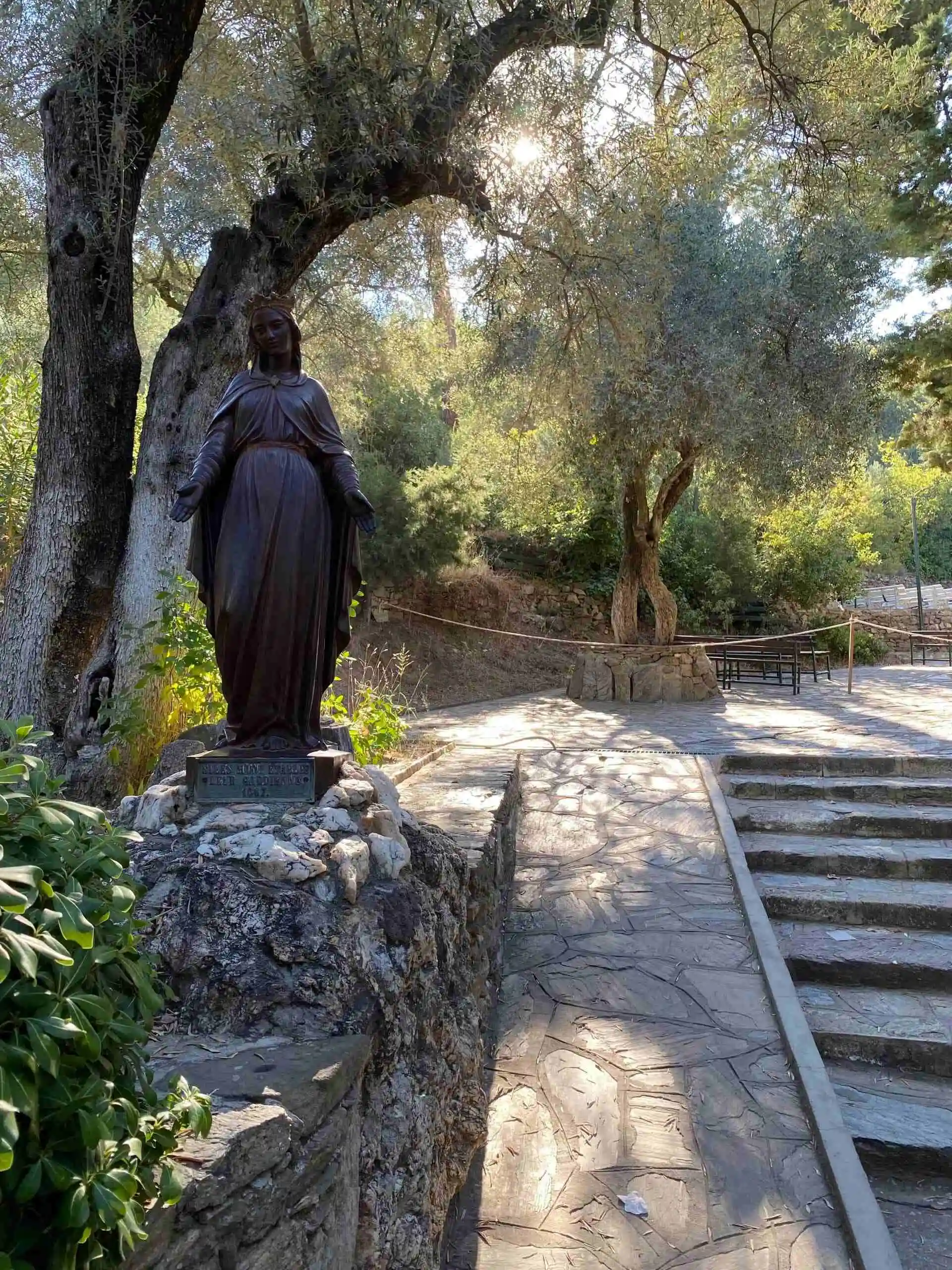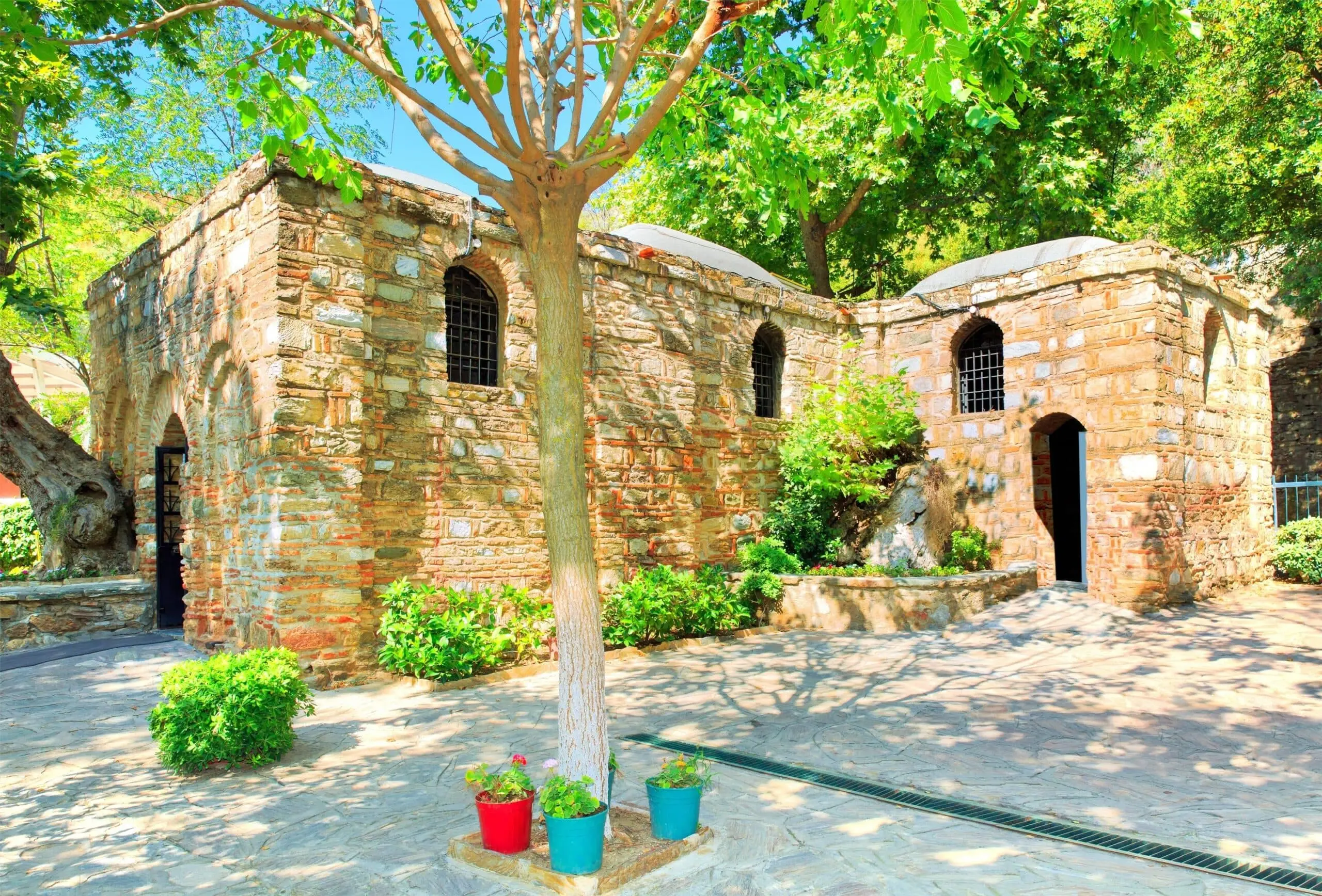One of the most popular destinations in the Western Anatolia is the House of the Virgin Mary. It is not only known as a place of worship and paying respects for the Virgin Mary, but also a place where the Islam and Christianity come together.
It is only a legend that the Virgin Mary spent her last years here. But this legend goes on for centuries, and it has some roots in this area. Ephesus was one of the biggest cities of the Roman Empire with a population of 250,000 habitants and it was already a huge cult center thanks to Artemis, the Greek goddess of hunting, birth, and the moon. Therefore, it is not a surprise that this place is still known as a holy place.
According to the Gospel of St. John, when Jesus is already on the cross, he takes a final look at his mother and says “Woman, behold thy son” (John 19: 25-27) and then he takes a final look at the disciple whom he loves (namely St. John) and says, “Behold thy mother” (John 19: 25-27). All this means that he entrusts the life of the Virgin Mary to St. John and vice versa. The Acts of the Apostles doesn’t give a clear insight of what happened to both, so what we know about them is made of legends. However, we know one thing for sure and that is Jerusalem was an extremely dangerous place for the apostles, and especially for the mother of Jesus especially after his Crucifixion. For this reason and to spread the Word of God, many apostles went into many parts of the Mediterranean world at that time. One of them was St. Peter, who went to Antioch and founded the church in that city, in which the name “Christianity” was mentioned for the first time ever as a separate religion from Judaism.

Correspondingly, it is highly believed that St. John came to Ephesus to find the church in this big city, to which St. Paul also made great contributions as told in the Acts of the Apostles. St. John also lost his life here in this city and today his tomb can be visited in the Basilica of St. John in the center of Selçuk, the rural district of the Izmir province which houses the ancient city of Ephesus as well. The oldest church in this district is the Church of Mary, which has a significant point in the History of Christianity as in 431 the Third Ecumenical Council was held and during this council the holy divinity of the Virgin Mary was accepted. This is one of the proofs that the Ephesians already believed that the Virgin Mary had spent the final years of her life in Ephesus, since at that time the churches could have the name of a person only if that person had lived in that city.
Nonetheless, during the Middle Age this legend was forgotten, and the general school of thought was that the Virgin Mary had spent the last years of her life in Jerusalem. Until a German nun named Anne Catherine Emmerich started talking about her. Although she was confined to bed and never had left Germany in her life, she was always having visions of her living on top of Mount Coressos in Ephesus. She lost her life in 1824 and later her visions were published in a book called The Life of the Blessed Virgin Mary: From the Visions of Ven. Anne Catherine Emmerich. From this book, some Lazarist priests from Izmir decided to go to that location to start scientific research at the end of the 19th century and they found the remains of a house which was originally dating back to the first century AD, when the Virgin Mary might have lived here. During these excavations, the house was also reconstructed and converted into a church. Thus, speculations about the final location of the Virgin Mary started again.

These speculations carried on until the arrival of Pope Paul VI here in 1967. Upon his arrival, he declared this place “a very important place for Christianity”. Later followed Pope John Paul II in 1979 and Pope Benedict XVI in 2006. So, the chapel became an especially important center for many Catholics of the world. But not only Catholics, during the research it was found out that the Orthodox Greeks from the near-by town called Kirkince (now Şirince) was coming here every 15th August to pay their respects to her since that day was considered as the Day of Ascension of the Virgin Mary and they were calling this place Panaya Kapulu. Therefore, this is also an important center for Christians of the Orthodox belief.
Apart from Christianity, many Muslims come here every day to show their respects for the Virgin Mary. Mary is the only woman mentioned in the Quran, namely in the surah named Maryam, the chapter named after herself. She is respected as the mother of a prophet, as Jesus is respected as one of the prophets. Overall, this is a place where one can witness the scene of people from different religions praying in their own manners.
- When and where was the Third Ecumenical Council of Christianity was held?
It was held in 431 in the Church of Mary in Ephesus and during this council the holy divinity of the Virgin Mary was accepted.
- Which popes visited the House of the Virgin Mary in Ephesus?
Pope Paul VI in 1967, the Pope John Paul II in 1979 and the Pope Benedict XVI in 2006.
- In which part of the Bible does Jesus entrust the Virgin Mary to St. John?
According to John 19: 25 – 27, Jesus is already on the cross; he takes a final look at her mother and says “Woman, behold thy son” and he looks at the disciple whom he loves, namely St. John and says, “Behold thy mother”, thus entrusting them to each other.




